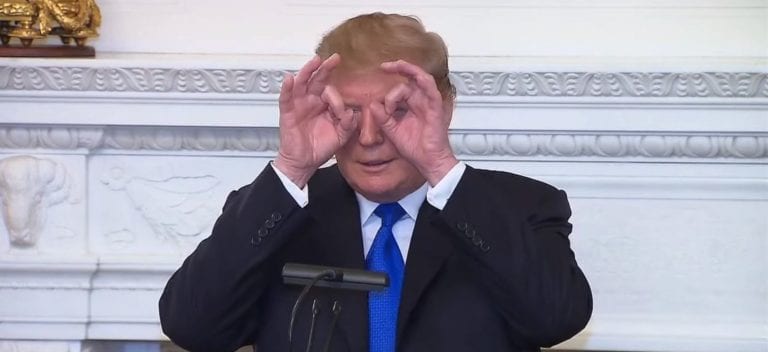Paused Social Security withholding? Remember!
October 21st, 2024
I’d forgotten about this, and it’s an important point that needs attention, given the election. We need to focus on bolstering Social Security.
Social Security withholding… talk about short-sighted… do you remember when tRump ordered a pause in payroll withholding for Social Security? It was chump change for the workers who got a small boost in take home pay and later had to pony up for those missed contributions. But policy wise, it was a HUGE step, and keep in mind that it was done by a Presidential Memorandum:
Deferring Payroll Tax Obligations in Light of the Ongoing COVID-19 Disaster – Memorandum for the Secretary of the Treasury
Yes, he really did that, deferral of withholding from September 1, 2020, to December 31, 2020. Thankfully, after those few months, payroll deduction was resumed.
What would it mean if Social Security payroll withholding were discontinued long term?
Social Security would go broke. As of now, it is projected to run out of funds in 2035. From the Social Security Administration:
The Future Financial Status of the Social Security Program
We know that they’d love to end Social Security and Medicare, that’s a well documented talking point, one which they do not like to have raised publicly. Every worker has paid into this fund for their entire working life. How to dismantle it? They’d start out, bit by bit, raising the age to receive Social Security and Medicare, decreasing or eliminating withholding, lowering the benefit. Just NO!
NO! WE ARE NOT GOING BACK!
Another transmission road show next week
October 17th, 2024
Hot off the press:
You can also attend online:
To review the DEIS, go to the PUC’s eDockets. Start HERE, click on “eDockets” on that page, and you’ll go to the search page. Enter “22” for year, and “131” or “132” for the docket:
The DEIS was filed in MANY documents on October 8. The full text is here:, all 506 pages of it:
And here’s where it gets interesting. This Notice is also for the Evidentiary Hearing, and note the limitations for the public:
Here’s what the rules say about public participation at ALL hearings, Minn. R. 1405.0800:
And also this, from Minn. R. 1405.1500:
And then there’s Minn. Stat. 216E.03…
So let’s take another look at that “Evidentiary Hearings” paragraph from the Notice just received:
The Iocco sign is DOWN!
October 16th, 2024
We had the Probable Cause hearing in the Iocco_2024-Campaign-Finance-Complaint. That huge sign was a flagrant violation of Minn. Stat. 211.15, prohibiting corporate contributions. The lease for the sign claimed a $1 charge, but it’s supposed to be market rate, otherwise it’s a corporate campaign contribution.
The ALJ had issued Notice-of-Determination-of-Prima-Facie-Violation-and-Order-For-Probable-Cause-Hearing. Then I missed that hearing, had the wrong conference code and no amount of calling and waiting made it work, grrrrrrrrr. Thankfully the judge did reschedule: Campaign Finance Probable Cause Hrg Rescheduled but left only Dehn Oil as a Respondent, and dismissed Gary Iocco, Gary Iocco for Mayor, and as I’d withdrawn complaint against Wilson Oil as it was Dehn Oil on the lease, received the night before, Wilson wasn’t, technically, involved.
This latest probable cause hearing was Monday. Dehn Oil had hired attorney just that morning, so he wasn’t up to speed, and the judge reluctantly did reschedule. Then after it was adjourned, the attorney and I got on the horn, chatted briefly, we put an agreement together, and we’re DONE! The sign is DOWN! It came down within hours of our talk — when he said “immediately,” he was not kidding. Dehn Oil is out of it, I’ve sent letter to the judge to dismiss Dehn Oil. I really appreciated his attitude, particularly in light of just getting into this matter just a couple hours at best before the hearing, not knowing background, jumping in cold.
Mankato-Mississippi xmsn EIS
October 16th, 2024
The Minnesota Public Utilities Commission approved the scope of the Environmental Impact Statement for Xcel’s Mankato-Mississippi (Wilmarth-Tremval) transmission line, PUC Dockets CN-22-532 and TN-23-157. Here’s the Commission Order:
What’s odd is this addition. Commissioner Tuma always, well, nearly always, has some Decision Option, something new or an amendment. Here’s what he proposed this time:
With this map, with no identifying features, classic transmission map without roads labeled:
Tuma said it was a change for a large landowner, and I did find that this had been noted in Comments:
There’s already a transmission line, and won’t moving it further away from that transmission line mean there will be greater loss of trees than if they put it next to the existing line and utilized some of that line’s RoW? What am I missing?
Campaign Finance Probable Cause Hrg Rescheduled
October 8th, 2024
What a relief. The ALJ on the Overland v. Iocco, Iocco for Red Wing Mayor, RRJ Redwing LLC, and Wilson Oil has rescheduled the hearing, she did not toss it out after I failed to appear (I had the wrong conference code, MY ERROR! AAACK!):
The matter logically goes on to a probable cause hearing because the lease shows that it was indeed a corporate contribution — a corporation signed the lease. Wilson Oil was logically dismissed because Gary Iocco produced a copy of the lease, late the evening before the October 1st hearing, which I then filed with OAH and also cover letter stating that I’d withdraw the Complaint against Wilson Oil as it was Dehn Oil that signed the lease. RRJ Redwing, LLC is an offshoot of Dehn Oil, and that’s where it gets sticky.
Here’s the lease:
It gets complicated, because RRJ Redwing, LLC owns the real estate, not Dehn Oil, though RRJ Redwing is an offshoot of Dehn Oil, yet the “Dehn Oil” rep signed the lease as “Dehn Oil.” And OH-NOOOOOO, the one signing for Dehn Oil is my wonderful neighbor who gives my cats frequent visits when we’re gone, making sure they’re not lonely… I’m SO glad it’s the corporations who will be held responsible, under Minn. Stat. 211B.15. But what authority does Dehn Oil have to lease RRJ Redwing, LLC property?
Something else noteworthy, though it’s purely academic because Wilson Oil has been dismissed: Mike Wilson said during the Probable Cause hearing that he has had nothing to do with Wilson Oil since he sold it, but the Secretary of State filings show that every year since 2017 the Annual Renewal has been filed, and though all that time has passed, Wilson remains CEO and the Principal Executive Office Address remains 2355 Old West Main.
Wilson claims to have sold it in 2017, but here’s the record of the Annual Renewal filings — over seven years he’s not changed the registration, AND on top of that, he was specifically informed of this during the September 19, 2024 Probable Cause Hearing #1, claimed he “didn’t know how that happened,” and “he’d have to talk to his attorneys,” blah blah blah, and as of today, October 8, he still hasn’t changed it:
And look at the footer on the lease (lease above). During Probable Cause Hearing, Wilson refused to give the judge an email to use in this proceeding. How long, how much effort, is required to set up a gmail account? DOH!
Here’s what he had to say when the ALJ requested an email:
He says his mail always goes to the P.O. Box, yes, P.O. Box 162. Hmmmm, again, look at the footer on the lease:
Well, well, well, wouldja lookie there, P.O. Box 162, that’s Mike Wilson’s P.O. Box for HIS mail, at least that’s what he told the judge, and it’s also the mailing address for Wilson Oil, based on the footer right there on Wilson Oil letterhead as of 7/19/2024, SEVEN YEARS after the sale! And I wonder who that wilsonoilco@gmail.com email would go to?
Anyway, here we go, another Probable Cause Hearing, date, time, and CONFERENCE CODE on the calendar in pen, set up as an alarm, and on a post-it above my screen — I’m wondering if I should tattoo the conference code on my hand:

























